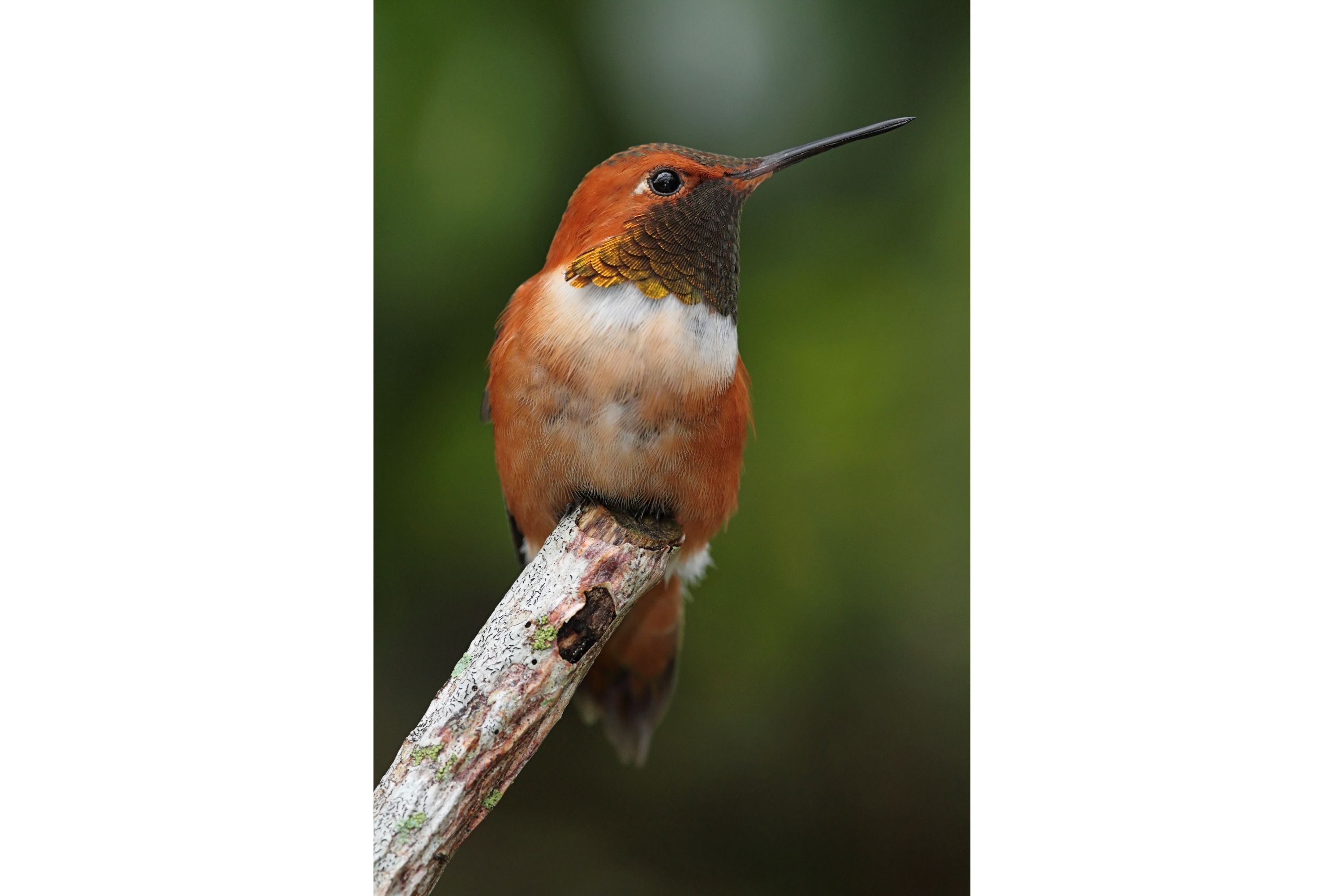Rufous hummingbird
(Selasphorus rufus)

Description
Selasphorus rufus, commonly known as the Rufous Hummingbird, is a small, brightly colored bird that belongs to the Trochilidae family. This bird is native to North and Central America, and is known for its unique physical and behavioral characteristics. In this article, we will discuss the various aspects of Selasphorus rufus, including its appearance, habitat, behavior, diet, breeding, and conservation status. Appearance: The Rufous Hummingbird is a tiny bird, measuring only 3 to 3.5 inches in length, and weighing only 3 to 4 grams. This bird has a stocky build, with a short, straight bill and short wings. The male Rufous Hummingbird has a striking orange-red throat, which is called a gorget. Its back and tail feathers are also reddish-brown, while its underparts are a pale, buff color. The female Rufous Hummingbird, on the other hand, is less vibrant in color, with a greenish-brown back and a whitish breast with brown speckles. Habitat: The Rufous Hummingbird is a migratory bird, and can be found in a range of habitats throughout North and Central America. During the breeding season, they are found in the western United States, from Alaska to California. In the winter, they migrate south to Mexico and Central America. They prefer to live in areas with abundant flowers and nectar sources, such as meadows, forests, and gardens. Behavior: The Rufous Hummingbird is an energetic and active bird, and is known for its quick, darting flight. They have a high metabolism, and are able to hover in mid-air while feeding on nectar from flowers. In addition to nectar, they also feed on insects, spiders, and tree sap. They are solitary birds and are known to be territorial, aggressively defending their feeding and breeding areas from other hummingbirds and intruders. They will chase and attack other birds that enter their territory. During the breeding season, males will perform high-flying courtship displays, where they hover in front of the females while making loud buzzing sounds with their wings. They are also known for their migratory behavior, traveling long distances from their breeding grounds in the western United States to their wintering grounds in Mexico and Central America. Diet: The Rufous Hummingbird is primarily a nectar feeder, and has a long, thin tongue that can reach deep into flowers to extract nectar. They also feed on small insects, such as aphids and gnats, which provide them with protein and other nutrients. During migration, they may also feed on tree sap, which is a high-energy food source. Overall, their diet consists of a combination of nectar and insects. Breeding: The Rufous Hummingbird is a monogamous bird, and typically mates for life. During the breeding season, the male performs a high-flying courtship display, where he hovers in front of the female while making a loud buzzing sound with his wings. Once a pair has formed, the female builds a small, cup-shaped nest out of plant fibers and spider webs, which she lines with soft materials such as moss and feathers. The nest is typically placed on a branch or twig, and is camouflaged with lichens and mosses. The female lays 2 small, white eggs, which hatch after about 16 days. The young are fed a diet of nectar and insects by both parents, and fledge the nest after about 20 days. Conservation Status: The Rufous Hummingbird is currently classified as a species of "Least Concern" by the International Union for Conservation of Nature (IUCN). This means that their populations are stable and their conservation status is not considered to be of immediate concern. However, localized declines have been observed in some areas due to habitat loss, climate change, and competition with other bird species for food and nesting sites. To help conserve this species, it is important to protect their habitats and provide them with a reliable source of nectar and insects. This can be achieved through measures such as planting native flowering plants, reducing pesticide use, and creating protected areas for the birds to breed and feed. Citizen science initiatives, such as monitoring and reporting sightings of Rufous Hummingbirds, can also help researchers and conservationists better understand and protect these important pollinators. In conclusion, Selasphorus rufus, or the Rufous Hummingbird, is a small but remarkable bird with a unique set of physical and behavioral characteristics.
Taxonomic tree:







